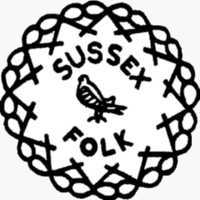
 American Square Dance Resources
American Square Dance ResourcesClub Locator
By Area/NameBy Meeting Day
American
Childrens
English
Events
Festivals
International
Morris & Clog
Music & Song
Musicians
Scottish
Teachers
Traditions
Club Name | Location |
Southwick, Adur, West Sussex | |
St Leonards on Sea, Hastings, | |
Goring, Worthing, West Sussex | |
| Yellow Rocks American Square Dance Club | Haywards Heath, Mid Sussex, |
[Note: American Round Dancing is basically choreographed ballroom dancing with all
couples dancing the same figures, similar to a formation dance team or to sequence dancing but under the direction of a caller or cuer.]
The Traditional square dances ("old time square dance") have regional styles, use a comparatively small number of calls
(between about ten and thirty depending on the region) and has no improvisation by the caller. It is extremely similar
to English Country Dancing in that each dance is explained beforehand (unless everyone is familiar with it). It has suffered
the vagaries of history, dying out in some regions and surviving in others (e.g. New England, the Appalachians). The dances
are often presented in alternation with contra dances and may also be refered to as quadrilles. Their historical antecedents can
often be determined.
Modern, or Western square dance - Lloyd Shaw (1890-1958) collected the traditional square dance calls and taught them on,
hopng to preseve the traditions that were dying out. Instead, the long-term result of his effort was a new style entirely
which caught on and boomed in the post-WWII period. CALLERLAB, the International Association of Square Dance Callers, was
created in 1971 to establish standardization and defines programs allowing dancers to go anywhere and being able to dance at the program they have learned.
Modern, or Western square dance refers to the square dances improvised by a caller. who strings together individual square
dance calls to make a sequence (note dance sequences are published though there is no guarentee that any caller will stick
to the script). So instead of learning individual dances, dancers learn the individual square dance calls (as well as the
'concepts') that relate to a particular difficulty level or program. They have to master the skill of moving from one
sequence to the next on cue. You cannot just turn up and expect to join in a Modern Western Square Dance without
mastering the calls and basic skills - hence the needs for classes.
The calls are organised by difficulty level into dance programs and hence Square Dances are advertised according to their
level. Each program is designed to reflect a particular interest in the dance and builds on the skills learned in the
previous dance programs. The programs are:
Mainstream which includes the 71 basic calls and most are the (relatively) traditional calls (being around for more than 50 years).
Plus which adds about 30 calls, most of which were created in the 1970's
Advanced (A1, A2) which adds 60 more calls and introduces concepts which can apply to many calls, and change how they are done.
Challenge Levels C1, C2, and C3A (and non-CALLERLAB C3B and C4) which have more of everything and seems to be more akin to problem-solving.
Modern Western Square Dance may also request a strict Hollywood influenced western-style dress code for occassions, which is known as
"traditional square dance attire", although it was not traditional before the late '50s and early '60s.
Clubs No Longer Meeting | Location |
Royal Squares | Ashington, Horsham, West Sussex |
Sunny Allemanders Square Dance Club | Broadbridge Heath, Horsham, |
Copyright © SusFA/John Douglas